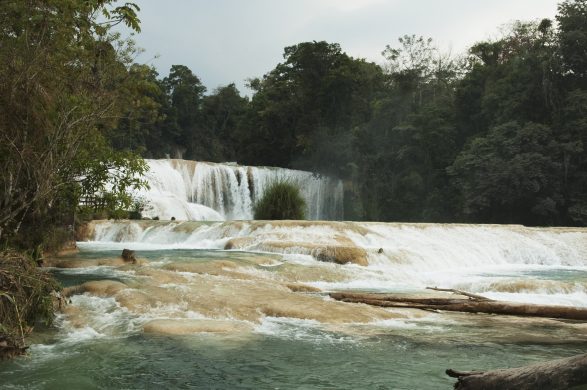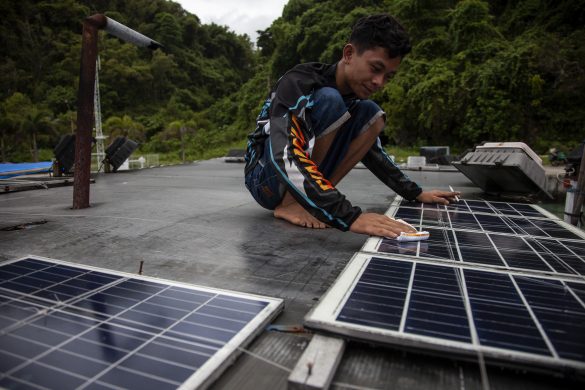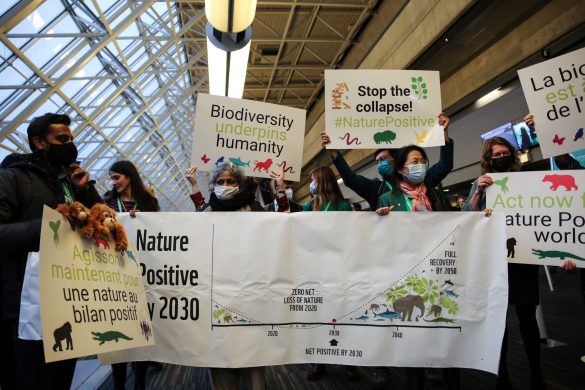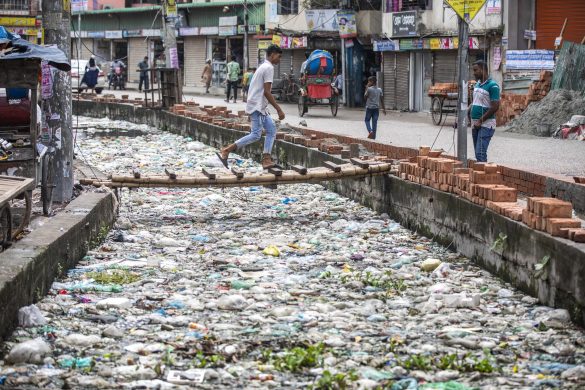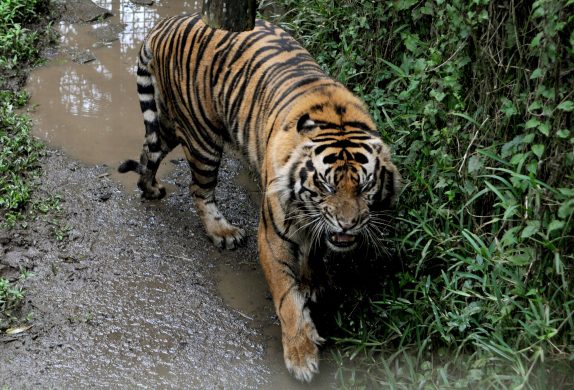NAIROBI, 29 July 2015 (UN News Service): The massive conversion of Borneo’s forests for the production palm oil together with the impact of climate change is driving to extinction the orangutan on Asia’s largest island.
Thereby making it “clear that a future without sustainable development will be a future with a different climate and, eventually, without orangutans, one of our closest relatives”, states UN
This is the grave situation, according to Achim Steiner, the Executive Director of the UN Environment Programme (UNEP), who wrote the foreword of a new report, “The Future of the Bornean Orangutan: Impacts of Change in Land Cover and Climate”, released Wednesday.
And the report’s lead author Dr. Serge Wich declared: “The current policies for land conversion on Borneo are simply unsustainable” not just for orangutans but for the human population as well.
Også klimaforandringerne spiller ind
The report is published by UNEP and Liverpool John Moores University in collaboration with the Great Apes Survival Partnership (GRASP).
It says, that “the massive conversion of Borneo’s forests for agricultural development – primarily oil palm – will leave the endangered orangutans fragmented and facing extinction in a number of areas.”
“The environmental impact of climate change exacerbated by the deforestation of Borneo could result in severe floods, temperature rises, reduced agricultural productivity and other negative effects,” the report said.
Skoven hugges ned med rasende fart
While native to Indonesia and Malaysia (Sarawak), a century of deforestation, illegal logging, hunting and expansion of agro-industrial plantations, have combined to isolate orangutans to only the rainforests of Borneo – the world’s third largest island – and Sumatra, says UNEP.
Borneo’s deforestation rate has been among the world’s highest for over two decades and 56 per cent of the protected tropical lowland forests – an area little less than Denmark – was lost between 1985 and 2001.
The report goes on to say that if deforestation in the Southeast Asia continues, a staggering 75 per cent of the original forest cover will be lost by 2030.
“The Future of the Bornean Orangutan”, examines, according to UNEP, different climate and land-cover scenarios for the years 2020, 2050 and 2080 and models the individual and combined effect of both factors on the orangutan habitat.
In each scenario, “dramatic rises” in temperature brought on by deforestation and the loss of land cover cause serious damage to the island’s biodiversity, with the combined model showing an even more pronounced impact than either factor alone, the report said.
UNEP: Der må gøres noget
UNEP’s top official, Mr. Steiner, urged adoption of programmes that measure the natural capital of a region and offer payment for ecosystem services to mitigate these threats.
“Now, it is time to utilize these approaches and divert from an unsustainable pathway to development,” he wrote, adding:
“It is clear that a future without sustainable development will be a future with a different climate and, eventually, without orangutans, one of our closest relatives.”
An estimated 55,000 Bornean orangutans remain in the wild, according to UNEP.
Læs videre på UN News
Se også mere på
http://www.unep.org/newscentre/Default.aspx?DocumentID=26830&ArticleID=35309&l=en
Et dansk initiativ søger at hjælpe den store truede menneskeabe






